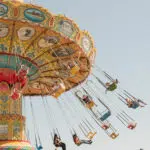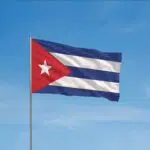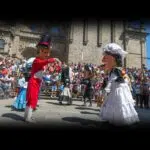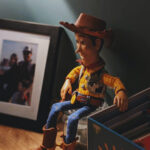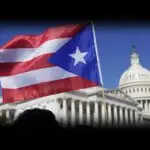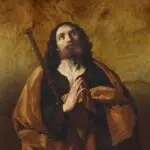National Day of the Cowboy, on the fourth Saturday in July — falling on July 25, this year — is here to prove to us that cowboy culture, despite the misconception that it has faded away over the years and been beaten down by the Information Age, is alive and well.
History of National Day of the Cowboy
It wouldn’t be too outlandish to say that the National Day of the Cowboy movement got its real start when ranchers and cowhands first started working herds in the American West before all 50 states were even formed. Roping and riding, herding cattle on horseback, living by the lariat on your saddle horn, and camping under a big, starry American sky — these things were integral to the American cowboy experience. For a long while, other countries’ perception of what Americans were like was exemplified by the ‘Marlboro Man’ image — a stoic, soft-spoken, self-reliant master of herd beasts and the wilderness.
Back in 2005, to make sure it stays that way, the organization National Day of the Cowboy (NDOC) sponsored a bill in the Wyoming House and Senate to preserve and celebrate cowboy culture and history in that state, attaching an eponymous holiday to be observed on the fourth Saturday in July. The bill passed and, since then, other states have passed NDOC in their legislatures. As of the end of July 2019, 15 states had passed the bill.
Since the beginning of NDOC’s political campaigning, they’ve raised awareness and enthusiasm for things like rodeos, cowboy history museums, and country fairs featuring roping demonstrations to make sure the cowboy image never dies. We’re in their corner, even if our only experience of the entire milieu comes from watching “Gunsmoke” and “The Rifleman.”
NDOC, the organization, shows no signs of slowing down. They operate under a corporate hierarchy, with a chairman, treasurer, and secretary at the top, all the way down to a cadre of committed volunteers at ground level. The grassroots movement is determined to pass NDOC in all 50 states and has steadily gained momentum since its start-up in 2005.
National Day of the Cowboy timeline
The first organized rodeo is held in Cheyenne, Wyoming.
Glur’s Tavern opens in Columbus, Nebraska — the first of its kind west of the Mississippi River.
The Wyoming state legislature sets a precedent by being the first to ratify the NDOC bill.
Montana becomes the 15th state to pass the NDOC bill.
National Day of the Cowboy FAQs
I’d like to know more about the NDOC organization itself. Where do I go?
There’s a wealth of information, stories, facts, and figures on their official website.
What does the cowboy represent, specifically?
According to “St George News,” the modern-day cowboy is a symbol of defiance, representing “freedom-loving Americans who are willing to stand firm for their natural rights in the face of an unreasoning, heavy-handed federal government.” That’s a little on the political side and we don’t necessarily espouse the above statement, but many would call it a fact.
Is there a National Horse Riding Day?
There is a National Horse Day, and we’ve got you covered with a page all about it, here.
National Day of the Cowboy Activities
Attend a rodeo
Even the most scholarly and urbane of Americans must admit that it’s simply fascinating to watch bull-riding and steer-roping competitions. So celebrate National Day of the Cowboy in person this year. Yee-hah!
Study cowboy culture
There are some very well-curated museums preserving the history of the American West, including the National Cowboy and Western Heritage Museum in Oklahoma City and The Cowboy Museum in Oakdale, California. Swing by and take a look!
Participate electronically
Do some cowboy-themed web surfing and post on the socials using the hashtag #NationalDayOfTheCowboy.
FIVE AMAZING FACTS ABOUT BULL RIDING:
“How much you got?”
Bull riding was made its own rodeo sport when 20 cowboys each chipped in $1,000 to found the Professional Bull Riders Association.
Hang on tight
A ride of eight seconds on the back of a bull qualifies the rider, with three ways to stop the clock — the rider’s free hand touching the bull, his other hand coming out of the rope, or the rider touching the ground.
Hard to handle
A bull named Red Rock was never successfully ridden for eight seconds during his stint in professional rodeo, throwing off over 300 riders in the 1980s.
Mean enough without a prod
There is a strict rule in professional bull riding that no spurs, whips, or electric shocks of any kind are to be used before, during, or after a ride.
A long history
Bull riding originated from ‘charreada’ — ranching and riding-skills contests — of Old Mexico, where the bulls were literally ridden to death.
Why We Love National Day of the Cowboy
It’s representative of American history
NDOC is meant to preserve that heroic, adventuresome ideal of the pioneer and the rancher, who carved their own slices out of unclaimed land and increased their herds, which meant financial success as well. Other countries have histories of beef ranching, but the true cowboy is a trope that is largely attached to the United States.
The Wild West is fun
In reality, the Wild West was dangerous, rough, and could be dark at times. But today, on National Day of the Cowboy, it’s okay to watch films or read about Billy the Kid, Wild Bill Hickok, and all the legends of that era.
It’s about tough and committed people
We guess the best phrase to describe those who live, work, and play within cowboy culture today is ‘true grit.’ Cowboys have it. Let’s celebrate it.
National Day of the Cowboy dates
| Year | Date | Day |
|---|---|---|
| 2025 | July 26 | Saturday |
| 2026 | July 25 | Saturday |


